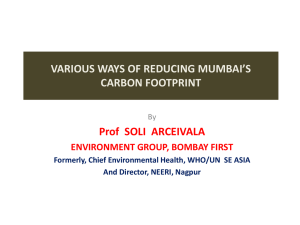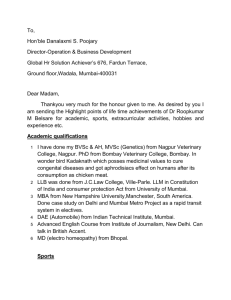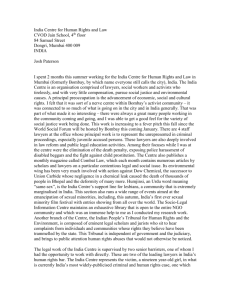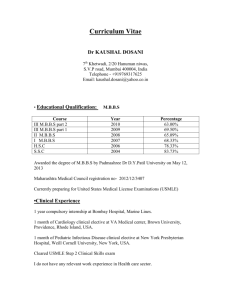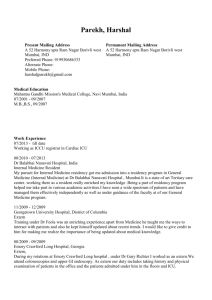Exercise file
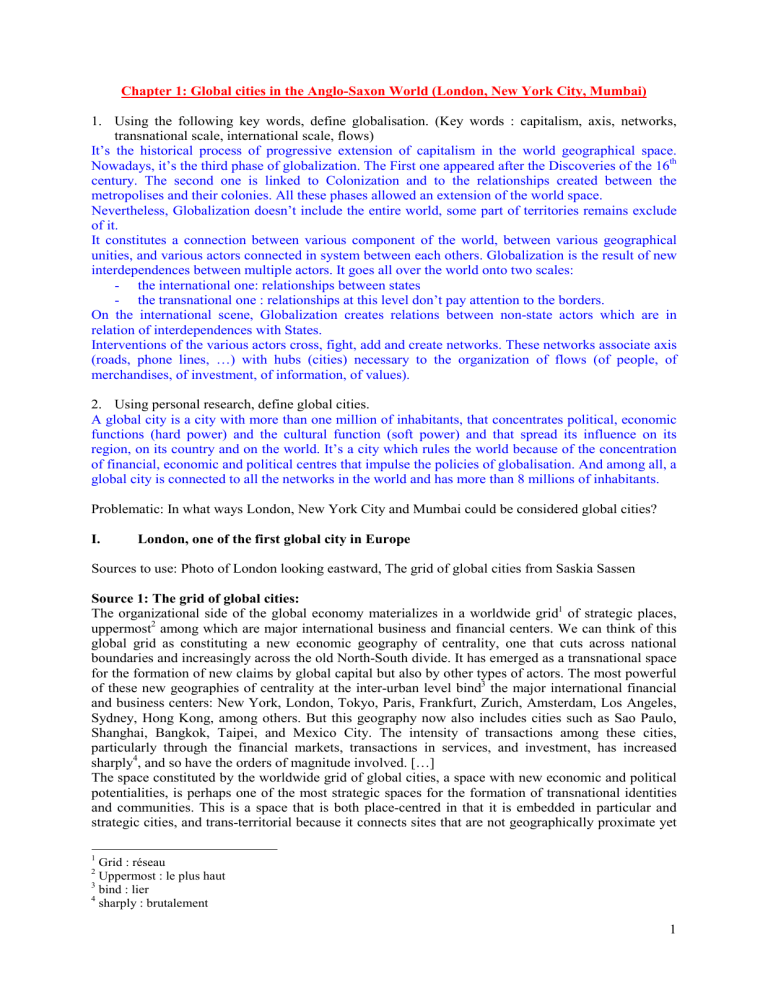
Chapter 1: Global cities in the Anglo-Saxon World (London, New York City, Mumbai)
1.
Using the following key words, define globalisation. (Key words : capitalism, axis, networks, transnational scale, international scale, flows)
It’s the historical process of progressive extension of capitalism in the world geographical space.
Nowadays, it’s the third phase of globalization. The First one appeared after the Discoveries of the 16 th century. The second one is linked to Colonization and to the relationships created between the metropolises and their colonies. All these phases allowed an extension of the world space.
Nevertheless, Globalization doesn’t include the entire world, some part of territories remains exclude of it.
It constitutes a connection between various component of the world, between various geographical unities, and various actors connected in system between each others. Globalization is the result of new interdependences between multiple actors. It goes all over the world onto two scales:
the international one: relationships between states
the transnational one : relationships at this level don’t pay attention to the borders.
On the international scene, Globalization creates relations between non-state actors which are in relation of interdependences with States.
Interventions of the various actors cross, fight, add and create networks. These networks associate axis
(roads, phone lines, …) with hubs (cities) necessary to the organization of flows (of people, of merchandises, of investment, of information, of values).
2.
Using personal research, define global cities.
A global city is a city with more than one million of inhabitants, that concentrates political, economic functions (hard power) and the cultural function (soft power) and that spread its influence on its region, on its country and on the world. It’s a city which rules the world because of the concentration of financial, economic and political centres that impulse the policies of globalisation. And among all, a global city is connected to all the networks in the world and has more than 8 millions of inhabitants.
Problematic: In what ways London, New York City and Mumbai could be considered global cities?
I.
London, one of the first global city in Europe
Sources to use: Photo of London looking eastward, The grid of global cities from Saskia Sassen
Source 1: The grid of global cities:
The organizational side of the global economy materializes in a worldwide grid
1
of strategic places, uppermost
2
among which are major international business and financial centers. We can think of this global grid as constituting a new economic geography of centrality, one that cuts across national boundaries and increasingly across the old North-South divide. It has emerged as a transnational space for the formation of new claims by global capital but also by other types of actors. The most powerful of these new geographies of centrality at the inter-urban level bind
3
the major international financial and business centers: New York, London, Tokyo, Paris, Frankfurt, Zurich, Amsterdam, Los Angeles,
Sydney, Hong Kong, among others. But this geography now also includes cities such as Sao Paulo,
Shanghai, Bangkok, Taipei, and Mexico City. The intensity of transactions among these cities, particularly through the financial markets, transactions in services, and investment, has increased sharply
4
, and so have the orders of magnitude involved. […]
The space constituted by the worldwide grid of global cities, a space with new economic and political potentialities, is perhaps one of the most strategic spaces for the formation of transnational identities and communities. This is a space that is both place-centred in that it is embedded in particular and strategic cities, and trans-territorial because it connects sites that are not geographically proximate yet
1
Grid : réseau
2
Uppermost : le plus haut
3
bind : lier
4
sharply : brutalement
1
are intensely linked to each other. It is not only the transmigration of capital that takes place in this global grid but also that of people, both rich—i.e., the new transnational professional workforce—and poor— i.e., most migrant workers; and it is a space for the transmigration of cultural forms, for the reterritorialisation of ‘local’ subcultures. […] Global cities and the new strategic geographies that connect them and bypass national states can be seen as constituting part of the infrastructure for global civil society.
Saskia Sassen, professor of the University of Chicago, Global civil society, Chapter 9: global cities and diasporic networks: microsites in global civil society, Oxford University press, 2002.
Source 2: London, looking eastward (from a French schoolbook for the European sections)
Source 3: Urban mutations in London (From British school book)
2
Source 4: London, a sprawling city (from a French schoolbook for the European sections).
Source 5: London starts CBD toll on traffic.
The world’s most radical traffic management scheme begins in London today with cities around the world watching closely to see if they should follow London’s lead.
Cars and trucks driving into central London will have to pay £5 (nowadays £11 – close to € 14) daily fee
5
in a traffic-fighting scheme that dwarfs
6
the limited inner-city tolls already imposed on some roads in Melbourne, Singapore and Toronto. […]
Mr Livingstone, the [former] mayor of London, says today is likely to be very bloody day as
Londoners confront 800 cameras monitoring vehicles entering a 25 square kilometres zone in the middle of the city. Mr Livingstone also admits he will probably be voted out of office next year if the scheme causes chaos or fails to speed up traffic, which now moves more slowly than the horse-drawn carriages that plodded
7
London’s streets a century ago.
Peter Wilson, The Australian, February 17 th
, 2003.
Source 6: “The road tolls for thee”:
London’s anti-congestion scheme […] is an overachiever, at least when it comes to traffic management. Congestion in the charging zone, as measured in minutes of delay per kilometre travelled, dropped on average by 30%, which is at the high end of the original projections. Yet financially the project is much less successful. Net income is only 80 millions of pounds, almost 40% less than planned. This is mainly because of the number of chargeable vehicles is lower and the scheme more expensive to operate than expected.
The Economist, June 10 th
, 2004.
Source 7: What makes London a global city?
London is a global city. […]
5
Fee = tax
6
to dwarf = to diminish, to drop down
7
to plod = avancer péniblement
3
London is a transport hub
8
to many other destinations: Europe and the world. […] It is populous and diverse. […] London is a center of financial and Business services: it’s the home to 33% of European th
Headquarters of the 500 Global Fortune. Over 40% of the world's foreign stock options are traded here, more than New York. Over 30% of the world's currency exchanges take place here, more than
New York and Tokyo combined. While New York and Tokyo are reliant
9
mainly on their large
American and Asian domestic markets, 80% of our business is international.
[…] Cities have an impact on the environment that transcends traditional boundaries: as a purchaser of goods and a user of energy London faces environmental challenges but has also developed environmental excellence to fight climate change – e.g. decentralized energy production, congestion charge etc.
[…] The challenges faced by global cities are similar. More than 50% of the world's population now live in cities and, according to the United Nations, this number is set to rise to 60% by 2030 and to
75% by 2050. Urban growth is now taking place on such a scale that the impact of cities on economic, social and environmental geography is unprecedented. The scale and pace of this change has consequences not just on how we live but on the world economy too. The London Development
Agency is leading in the field of economic development; we are developing projects which aim to confront the major problems that cities typically face whilst ensuring that we achieve sustainable economic growth.
Source: London development Agency, London government website, http://www.lda.gov.uk/server/show/ConWebDoc.1997
Questions:
1.
Identify the different part of the city on source 2 and try to figure out what is its function.
2.
Prove that London concentrates all the function of a global city.
3.
Prove that London is a hub.
4.
Prove that London has an influence on its region (before answering the question, define the range of that region).
5.
Prove that London has an influence all over the world.
6.
Give a major problem in London and describe the solution found to resolve it? Does it succeed?
II.
New York City, the most powerful global city in the world
Source 1: The grid of Global cities from Saskia Sassen (look at London case study)
Source 2: Map of Manhattan (based on a French schoolbook)
8
hub = nœud de communication reliant tous les types de mode de transports entre eux.
9
reliant = dependent
4
Source 2: New York aerial view, taken from the film Home made by Yann Arthus
Bertrand in 2009.
Source 4: Global cities, an attempt of definition:
[…] There is a class of cities that are critical to the new global economy. These are called global cities, because they perform certain functions that differentiate them from others and that help drive the global economy. […] One key element of the functional global city system is that new networks and linkages are created in the system and global cities are the points of convergence of these networks and thus acquire growing centrality and importance. Network functions are engendered through financial flows, headquarter-branch relations, high-tech service intensity, and telecommunications networks […] Global cities should be seen as a
“junction in flows” of goods, information. […] Competitive leadership depends upon the nodality
10
, density, and efficiency of international transport and communication networks linking theses cities to the rest of the world. Hubs within these networks have accounted for a disproportionate share of urban development and have attracted firms engaged in transport logistics, telecommunications, and air passenger transports.
Fu-Chen Lo and Yue-Man Yeung, Globalisation and the world of large cities, UN University
Press, 2008
Source 5: T h e f o l l o w i n g i s t h e t e x t o f M a y o r B l o o m b e r g ' s w e e k l y r a d i o a d d r e s s a s p r e p a r e d f o r d e l i v e r y o n 1 0 1 0 W I N S N e w s
R a d i o
2 0 0 7 .
f o r S u n d a y , M a y 2 0 ,
"Good Morning. This is Mayor Mike Bloomberg.
"There's no longer much doubt that the greenhouse gases we produce by burning fossil fuels contribute to global warming; the real question now is 'What are we going to do about it?' New York's answer is straightforward; we aim to reduce our release of greenhouse gases by 30% by 2030. In fact, City
10
Characteristic of being a hub.
5
government is going to lead the way by hitting that 30% target by 2017. These are ambitious goals, and last week we took some major steps toward reaching them.
"On Wednesday, I joined former President Bill Clinton in announcing a multi-billion dollar publicprivate partnership that will help property owners and government agencies in New York and 15 of the world's other biggest cities cut energy consumption in our existing buildings.
"Working with the Clinton Foundation, five major international banks have each pledged $1 billion to finance upgrades in heating, cooling, and lighting systems and other worldwide building improvements that will cut energy use-and greenhouse gas production-by as much as 50%. This will make a big difference in New York, because the more than 900,000 buildings in the five boroughs account for nearly 80% of the greenhouse gases we produce. […]
"Automobile exhaust is another major source of greenhouse gases. It also produces the air pollution responsible for the tragically high rates of serious childhood asthma in our city. That's what makes our proposed pilot project of automobile congestion pricing in Manhattan below 86th Street so important.
It would cut the number of vehicles on those streets-and on streets and highways throughout the city and region-and also finance major mass transit projects. […]
"I stressed our city's environmental goals-especially those relating to global warming-when I spoke to mayors of many of the world's greatest cities when they were in New York last week for a global summit on climate change. Cities are at the forefront of fighting global warming. Even though cities produce more than 70% of the world's greenhouse gases, the good news is that because our homes and businesses are relatively compact and close to one another, and because we rely so heavily on mass transit, New York and other cities also tend to be very energy efficient.[…]
"This is Mayor Mike Bloomberg. Thanks for listening."
Questions:
1.
Make a short analysis of source 1, 2 and 5.
2.
Identify on source 2 the various districts of New York City and their function.
3. Prove that New York City has all the functions of a global city
4. Prove that New York City is a hub
5. Prove that New York City has a regional, national and international influence.
6. Prove that NYC decided to develop a sustainable development program.
III.
Mumbai, a megacity attempting to be an A level global city.
Source 1 : Model of LDCs urban area (based on Sao Paulo urban area), BBC website geography:
6
Source 2 : A urban hierarchy : BBC website geography :
Source 3: The city layout: Britannica Encyclopedia, 2007, article Bombay.
The older part of Bombay is much built up, but more affluent areas, such as Malab ā r Hill, contain some greenery; there are also a number of open playgrounds and parks. Bombay's history of burgeoning urbanization has created slums in sections of the city. An alarming rate of air and water pollution has been caused by the many factories still crowding the city, the growing volume of motorvehicle traffic, and the nearby oil refineries.
The financial district is located in the southern part of the city (around old Fort Bombay). Farther south (around Col ā ba) and to the west along Netaji Subhas Road (Marine Drive) and on Malab ā r Hill are residential neighbourhoods. To the north of the fort area is the principal business district, which gradually merges into a commercial-residential area. Most of the older factories are located in this area. Still farther north are residential areas, and beyond them are recently developed industrial areas as well as some shantytown districts.
Housing is largely privately owned, though there is some public housing built by the government through publicly funded corporations or by private cooperatives with public funds. But Bombay is very crowded, and housing is scarce for anyone who is not very rich. For this reason, commercial and industrial enterprises find it increasingly difficult to attract middle-level professional, technical, or managerial staff. There is continuous immigration of unskilled labour from the hinterland, and the number of indigent and homeless people is increasing. City planners have sought to stop this movement and to persuade enterprises to locate across Bombay Harbour in the developing “twin city” of New Bombay by banning the development of new industrial units and the expansion of existing ones inside the city. But the ban has been largely breached in practice whenever entrepreneurs threaten to relocate their businesses to some other part of the country.
Source 4: Mumbai economic organization: Britannica Encyclopedia, 2007, article Bombay :
Bombay is the economic hub and commercial and financial centre of India. Its economic composition in some respects demonstrates India's peculiar fusion of the nuclear and cow-dung ages. The city contains the Indian Atomic Energy Commission's establishment, which includes nuclear reactors and plutonium separators. In many areas of the city, however, traditional biogenic sources of fuel and energy are still in use.
The cotton-textile industry, through which the city prospered in the 19th century, is still important but is in relative decline. New growth industries—metals, chemicals, automobiles, electronics, engineering, and a host of ancillary enterprises—as well as urban industries such as food processing,
7
papermaking, printing, and publishing have been at the core of expansion of manufacturing employment.
The Reserve Bank of India, the country's Central Bank, a number of other commercial banks, and the
Life Insurance Corporation of India—a nationalized enterprise and the country's largest investor in government bonds and private stocks—as well as other major long-term investment financial institutions, are located in Bombay. These, in turn, have attracted a number of financial and business services to the city.
The Bombay Stock Exchange is the country's leading stock and share market. Though a number of the economic hubs that have sprung up around the country since independence have reduced the exchange's pre-independence stature, it remains the preeminent centre in volume of financial and other business transacted and serves as a barometer of the country's economy.
Source 5: Mumbai is integrated to transportation networks, Britannica Encyclopedia, 2007, article Bombay:
Bombay is connected by a network of roads to the north, east, and south of India. It is the railhead for the Western and Central railways, and trains from the city carry goods and passengers to all parts of
India. The Sahar International Airport, on Salsette Island, is an important point of entry for many foreign airlines, and nearby Santa Cruz Airport serves domestic flights. Bombay handles about 60 percent of the international and nearly 40 percent of the domestic air traffic in India. The facilities provided by Bombay Harbour make the city India's major western port. Though other major ports have sprung up on the west coast—Kandla to the north and Goa and Cochin to the south—Bombay still handles more than 40 percent of India's maritime trade.
Two suburban electric train systems provide the main public transportation and daily convey hundreds of thousands of commuters from outside the city. There is also a municipally owned bus fleet.
Source 6: Mumbai urban area map:
8
9
Source 7 : Photos of Mumbai urban area, photos from BBC website:
Mumbai CBD
Dharavi Slum, Mumbai
Source 8: Urban problems in squatter settlements: BBC website geography:
10
Source 9: Taken from Globalization, access to geography:
Questions:
1.
Prove that Mumbai can be considered a global city.
2.
Show that the problems in Mumbai are those of mega city from LDCs.
3.
Show that Mumbai is “the real capital of India”?
4.
Show that Mumbai is marked by inequalities due to differences of development and to globalization?
5.
How does Mumbai try to resolve the problem encountered to become a real modern and global city? Is it effective?
11
